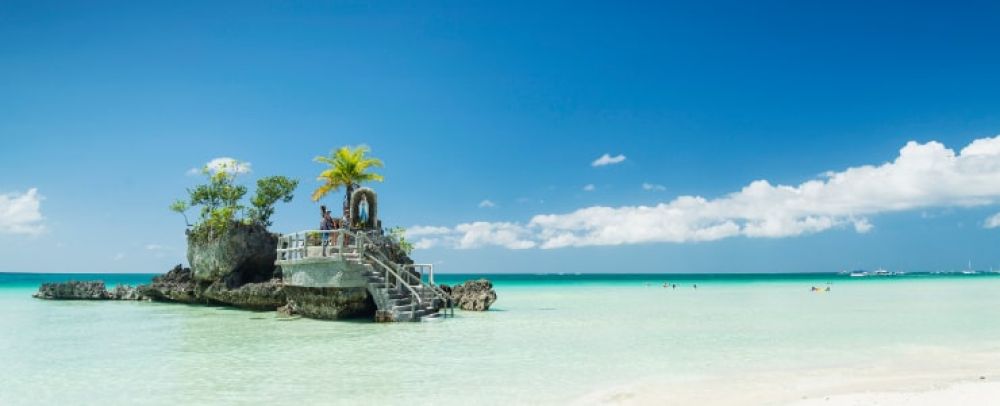

Boracay, an island in the Philippines, renowned for its white sandy beaches and vibrant nightlife, has been a tourism hotspot for decades. Of its many attractions, Willy's Rock stands as a unique landmark that has captivated the hearts of countless travelers.
Willy's Rock, named after the nearby Willy's Beach Club Hotel, is a volcanic formation located at Station 1 on Boracay's white beach. Its history as a tourist destination is intricately tied to the rise of tourism in Boracay. In the 1970s and 1980s, the island was a well-kept secret, known only to backpackers and adventure travelers. During this time, Willy's Rock was just another picturesque element in an undiscovered paradise.
The 1990s saw a shift, with Boracay emerging as a must-visit location. This era marked the development of infrastructure to support the waves of tourists flocking to the island. As access to the island improved, with better transportation and accommodation, Willy's Rock became a prominent feature in the memories of visitors, symbolizing Boracay's natural beauty and serene atmosphere.
With the advent of digital technology and social media, images of Willy's Rock started circulating worldwide, beckoning more travelers. It became one of the most photographed icons of the Philippines, further enhancing its status as a tourist must-see. The picturesque rock, with its Virgin Mary statue, offered the perfect backdrop for countless holiday photos and sunset shots, solidifying its place in the island's tourism appeal.
The tourism spike led to Boracay facing challenges of overcrowding and environmental degradation. In response, the Philippine government temporarily shut down the island for rehabilitation in 2018. This bold move focused on sustainable tourism, ensuring that landmarks like Willy's Rock would be preserved for future generations. Following the island's reopening, there has been a more regulated approach to tourism, balancing development with ecological conservation.
After the pandemic restrictions, there's a noticeable shift towards more responsible and sustainable travel practices. Tourists are now more aware of their impact on the environment and local communities. Destination highlights, such as Willy's Rock, continue to attract visitors, but with new regulations that promote responsible enjoyment of the island's natural resources.
Today, Willy's Rock remains a steadfast symbol of the island's allure, offering a blend of natural beauty, cultural significance, and a touch of spiritual serenity. As Boracay continues to adapt to the evolving demands of global tourism, Willy's Rock stand as a reminder of the island's journey from a hidden gem to a world-class destination.